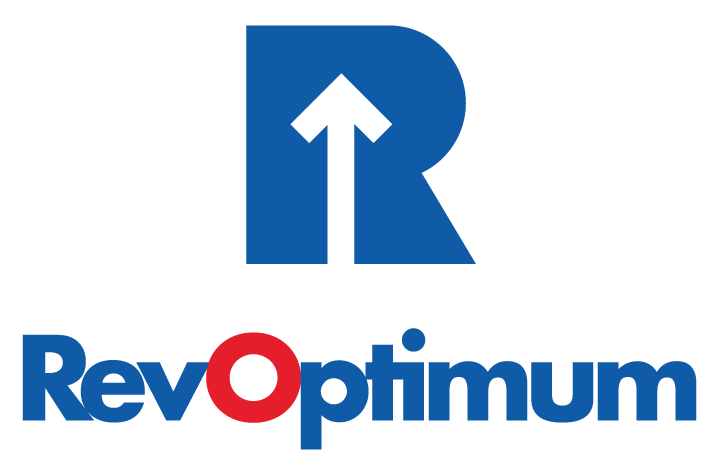In the ever-evolving landscape of hotel revenue management, one of the most crucial decisions hoteliers must navigate is whether to adopt dynamic or static rates across their distribution channels. This choice holds immense significance as it directly influences a hotel's revenue streams, distribution strategy, and overall competitiveness in the market. In this blog post, we delve into the pivotal importance of dynamic versus static rates in distribution channels, shedding light on the multifaceted factors that hoteliers must carefully consider when making this critical decision.
Dynamic rates, characterized by their adaptability and responsiveness to real-time market conditions, offer hoteliers the flexibility to adjust pricing strategies based on a myriad of dynamic factors. These factors encompass fluctuations in demand, seasonality, competitor pricing strategies, booking patterns, and external events impacting local demand. By leveraging dynamic rates, hotels can capitalize on revenue optimization opportunities presented by shifting market dynamics, ensuring optimal revenue generation and maximizing occupancy levels.
Conversely, static rates maintain a fixed pricing structure over a predefined period, remaining unaffected by changes in market conditions or demand patterns. While static rates offer simplicity and predictability, they may fail to capture the revenue optimization potential inherent in dynamic market dynamics. The choice between dynamic and static rates thus represents a pivotal decision for hoteliers, with far-reaching implications for their revenue management strategies and overall business performance.
Understanding Dynamic vs. Static Rates:
Dynamic rates, also known as flexible rates, are a cornerstone of modern revenue management strategies within the hospitality industry. They are characterized by their ability to adapt and respond in real-time to a multitude of factors influencing demand and pricing dynamics. These factors include but are not limited to demand trends, seasonality, competitor pricing strategies, events or festivals in the area, and booking patterns both historically and in the current context.
The flexibility inherent in dynamic rates allows hoteliers to optimize their pricing strategy to maximize revenue and occupancy levels. For instance, during peak demand periods such as holidays or major events in the vicinity, dynamic rates can be adjusted upwards to capture the increased willingness of guests to pay higher prices. Conversely, during periods of low demand or off-peak seasons, dynamic rates can be lowered to stimulate demand and maintain healthy occupancy levels.
On the other hand, static rates, also known as fixed rates, maintain a constant pricing structure over a predefined period. These rates do not fluctuate in response to changes in market conditions or demand patterns. While static rates offer simplicity and predictability, they may not effectively capture revenue optimization opportunities presented by dynamic market conditions.
The key distinction between dynamic and static rates lies in their responsiveness to market dynamics. Dynamic rates offer hoteliers the agility to adapt pricing strategies in real-time based on shifting demand patterns and competitive landscape, ultimately maximizing revenue potential. In contrast, static rates provide consistency but may miss out on revenue optimization opportunities presented by fluctuating market conditions.
The Importance of Dynamic Rates in Distribution Channels
Dynamic rates offer several advantages in distribution channels that can enhance a hotel's revenue potential and competitiveness:
1. Flexibility and Adaptability
Dynamic rates allow hotels to respond quickly to changing market conditions, ensuring that room prices remain competitive and attractive to potential guests. By adjusting rates based on demand fluctuations, hotels can maximize revenue and occupancy while maintaining a competitive edge in the market.
2. Maximising Revenue Potential
Dynamic rates enable hotels to capitalize on periods of high demand by adjusting prices accordingly, thereby maximizing revenue potential during peak seasons or high-demand periods. Conversely, during periods of low demand, dynamic rates can be adjusted to stimulate bookings and minimize the risk of revenue loss.
3. Optimizing Distribution Strategy
Dynamic rates empower hotels to implement a strategic distribution strategy across various channels, including direct bookings, online travel agencies (OTAs), global distribution systems (GDS), and meta-search engines. By offering dynamic rates across multiple channels, hotels can reach a broader audience of potential guests and optimize their distribution mix for maximum revenue generation.
4. Enhancing Revenue Management Efficiency
Dynamic rates are supported by advanced revenue management systems (RMS) that leverage data analytics and predictive modeling to forecast demand and optimize pricing strategies. These systems enable hotels to automate rate adjustments, streamline revenue management processes, and make data-driven decisions to maximize revenue and profitability.
Considerations for Implementing Dynamic Rates
While dynamic rates offer numerous benefits, hoteliers must consider several factors when implementing them in distribution channels:
- Market Dynamics: Hoteliers must carefully analyze market dynamics, including demand trends, competitor pricing, and booking patterns, to determine the optimal pricing strategy for their property.
- Channel Management: Effective channel management is crucial for distributing dynamic rates across various channels while maintaining rate parity and optimizing revenue potential. Hoteliers must leverage technology solutions and channel management tools to streamline distribution processes and ensure consistent pricing across channels.
- Pricing Strategy: Hoteliers must develop a comprehensive pricing strategy that aligns with their revenue goals, target market segments, and brand positioning. Dynamic rates should be tailored to different market segments and booking channels to maximize revenue and occupancy.
- Technology Infrastructure: Implementing dynamic rates requires robust technology infrastructure, including a reliable revenue management system (RMS) and channel management tools. Hoteliers must invest in advanced technology solutions to support dynamic pricing strategies and optimize revenue management efficiency.
As hoteliers navigate the dynamic landscape of revenue management, the choice between dynamic and static rates in distribution channels emerges as a critical decision with profound implications for revenue streams and market competitiveness. While static rates offer simplicity and consistency, dynamic rates provide unparalleled flexibility, adaptability, and revenue optimization potential.
To thrive in today's dynamic hospitality landscape, it's imperative for hoteliers to understand the pivotal role of dynamic rates in distribution channels and carefully consider key factors when implementing them. By embracing dynamic rates, hoteliers can unlock new revenue optimization opportunities, maximize occupancy levels, and stay ahead of the competition.
Are you ready to take your revenue management strategy to the next level? Reach out to RevOptimum today to explore how our expert solutions and tailored strategies can empower your hotel to thrive in an ever-evolving market.
Leave Hotel Revenue Management to the experts.
We know you are business as a hotelier, and we know running a hotel requires focus and work in multiple aspects. Leave the hotel revenue management to RevOptimum. We are ready to start boosting RevPAR for your hotel, while you can focus on increasing your direct bookings.
RevOptimum is known as the pioneer in remote revenue management. Our team digs into your hotel’s metrics, monitors broader markets, and personalizes a revenue management strategy to your hotel’s unique needs.
Want to see what it’s like working with RevOptimum? Download our checklist, “What to Expect When Working with RevOptimum” and see how our team can increase your hotel’s revenue.
About the Author

Mia Belle Frothingham
Mia Belle Frothingham is the Co-Founder and Chief Marketing Officer of RevOptimum. She oversees all aspects of corporate marketing and outreach strategies, including communications, brand identity, and international and digital advertising. Mia has a Revenue Management certification from Cornell University and received a Bachelor's from Harvard University and a Research Master's from The University of Edinburgh.



